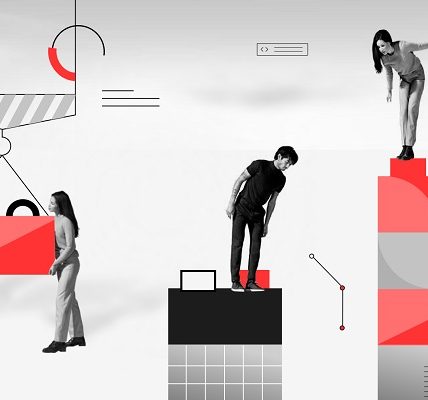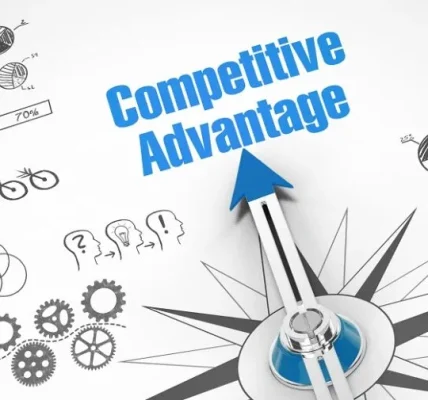Introduction
Sustaining growth momentum — whether for an individual, a startup, or an established enterprise — is rarely the result of luck. More often, it’s the outcome of consistent, disciplined action. Discipline creates the scaffolding that turns sporadic wins into repeatable systems. In this guest post, we unpack how discipline functions as the engine of sustained growth, show practical ways to embed it across people, processes, and culture, and provide an actionable blueprint to maintain momentum through changing conditions.
Why discipline matters for growth
Discipline is the connective tissue between strategy and results. Without it, strategies remain plans on paper; with it, those strategies become repeatable outcomes. Disciplined teams execute reliably, measure intelligently, and learn faster from setbacks. At scale, discipline reduces variability — ensuring that the outputs of your organization are predictable and optimizable.
Key benefits of discipline
- Predictability: Systems produce consistent outcomes rather than random spikes.
- Scalability: Disciplined processes can be replicated and automated.
- Resilience: Habitual rigor helps organizations weather shocks and sustain momentum.
- Learning: Disciplined measurement creates a feedback loop for continuous improvement.
The pillars of discipline that sustain growth momentum
To apply discipline effectively, think in terms of pillars — foundational areas where discipline must be enforced and intentionally nurtured.
Pillar 1 — Clear, measurable goals
Discipline starts with clarity. Goals must be specific, measurable, aligned, and time-bound.
- Specific: Vague goals like “grow revenue” are weak. Replace them with “increase MRR by 18% in Q3.”
- Measurable: Use KPIs that map directly to the goal (e.g., conversion rate, CAC, churn).
- Aligned: Ensure every team’s goals ladder up to the company target.
- Time-bound: Deadlines create urgency and enable progress reviews.
Why it sustains momentum: Measurable goals create a scoreboard. Teams know where they stand and what to prioritize, encouraging disciplined daily choices.
Pillar 2 — Repeatable processes
Once you know the destination, define the route. Repeatable processes reduce cognitive load and variability.
- Document workflows for onboarding, sales outreach, product releases, and incident response.
- Use checklists to remove single-point failure risks.
- Standardize handoffs between teams to avoid friction.
Why it sustains momentum: Repetition breeds competence. Processes that work consistently free leaders to focus on strategy and optimization rather than firefighting.
Pillar 3 — Rigorous measurement and feedback loops
Discipline without measurement is guesswork. Track the right metrics and set review cadences.
- Establish leading and lagging indicators.
- Run weekly stand-ups for tactical checks and monthly strategy reviews for directional alignment.
- Create “fail-fast” experiments with clear hypotheses and evaluation criteria.
Why it sustains momentum: Continuous feedback prevents small problems from compounding into momentum-killers and accelerates learning.
Pillar 4 — Focused prioritization
Not all opportunities deserve equal attention. Discipline requires saying “no” — often.
- Use frameworks (RICE, ICE, Eisenhower matrix) to evaluate initiatives.
- Limit concurrent initiatives to avoid context-switching costs.
- Protect “focus time” at organizational and individual levels.
Why it sustains momentum: Laser focus ensures available resources push the highest-leverage activities forward.
Pillar 5 — Accountability and ownership
Clear ownership drives action. Assign decision rights and consequences.
- Define RACI (Responsible, Accountable, Consulted, Informed) charts for projects.
- Tie incentives to measurable outcomes and observable behaviors.
- Use transparent dashboards so performance is visible across teams.
Why it sustains momentum: When people own outcomes, they take initiative and keep projects moving forward.
Pillar 6 — Cultural rituals and habits
Discipline is cultural as much as procedural. Rituals maintain rhythm.
- Daily stand-ups, weekly retrospectives, quarterly planning, and annual reviews embed cadence.
- Celebrate small wins to reinforce behaviors.
- Encourage routines that support well-being (sleep, exercise, breaks) — sustained performance requires sustainable energy.
Why it sustains momentum: Rituals create habit loops, turning disciplined choices into second nature.
Implementing discipline: a practical roadmap
Transforming discipline from abstract virtue into operational reality requires a plan. Below is a step-by-step implementation roadmap.
Step 1 — Audit current state
- Map existing processes, goals, and measurement practices.
- Identify gaps: metrics not tracked, decisions lacking owners, frequent handoff failures.
Step 2 — Define a disciplined operating model
- Establish core KPIs and reporting cadence.
- Create process playbooks for high-value workflows.
- Assign ownership using RACI and set clear acceptance criteria.
Step 3 — Build measurement systems
- Implement dashboards and automated reporting.
- Choose a single source of truth for metrics to avoid version conflicts.
- Train teams on metric interpretation and action triggers.
Step 4 — Launch pilot squads
- Test disciplined practices on a small number of cross-functional squads.
- Collect qualitative and quantitative feedback.
- Iterate on processes before rolling out broadly.
Step 5 — Scale with governance
- Create a lightweight governance model to ensure compliance and continuous improvement.
- Use monthly steering reviews to resolve cross-team conflicts and re-prioritize.
Step 6 — Institutionalize learning
- Run regular retrospectives and share case studies internally.
- Create a knowledge repository of playbooks and experiment results.
Leadership’s role in enforcing discipline
Leaders set the tone. Discipline cascades from the top through behavior modeling, structure, and resource allocation.
- Modeling: When leaders follow the processes they expect others to follow, credibility rises.
- Resourcing: Prioritize budget and people for disciplined execution — tools, training, and time.
- Communication: Reinforce why discipline matters through stories and data, not just directives.
- Decision-making: Favor evidence-based and timely decisions over procrastination or indecision.
Practical leader behaviors:
- Hold regular outcome-focused reviews rather than status updates.
- Ask for concise, metric-backed proposals.
- Reward consistent execution as much as innovation.
Tools and techniques to support discipline
Technology can enforce and amplify disciplined practices.
- Project management tools (Kanban/Scrum boards) to visualize work and limit WIP.
- Analytics platforms for real-time KPI tracking.
- Automation tools to reduce manual repetitive tasks and enforce process steps.
- Knowledge bases to capture institutional memory and standard operating procedures.
- OKR frameworks to align individual and team objectives to company outcomes.
Use tools intentionally — the tool shouldn’t create bureaucracy; it should remove friction.
Common pitfalls and how to avoid them
Even well-intentioned discipline can go wrong. Here are common traps and remedies.
- Over-bureaucratization: Too many rules slow teams down. Remedy: Keep governance lightweight and focus on outcomes, not process for its own sake.
- Metric fixation: Chasing vanity metrics leads to misaligned behaviors. Remedy: Prioritize metrics tied to long-term value and customer outcomes.
- One-size-fits-all processes: Different teams need different ways of working. Remedy: Customize playbooks while keeping core measurement and accountability consistent.
- Punitive accountability: Fear reduces experimentation. Remedy: Build a culture where accountability includes support and learning.
- Neglecting creativity: Discipline shouldn’t kill innovation. Remedy: Reserve time and safe spaces for divergent thinking and experiments.
Measuring the ROI of discipline
How do you know discipline is paying off? Use a combination of direct and proxy indicators.
Direct indicators:
- Increased conversion rates or reduced churn.
- Shorter cycle times for product releases or sales cycles.
- Higher employee productivity metrics (e.g., throughput per sprint).
Proxy indicators:
- Reduced variance in delivery timelines.
- Higher predictability in quarterly forecasts.
- Employee engagement and retention scores rising (sustainable teams maintain momentum).
Set baseline measurements before interventions and measure uplift at regular intervals (e.g., quarterly).
Case examples (illustrative)
- A SaaS company reduced churn by implementing disciplined onboarding checklists and weekly customer health scoring. The repeatable onboarding process improved time-to-value and decreased early cancellations.
- A manufacturing firm decreased variability in production by standardizing machine handoffs and daily SOP checklists, improving throughput while reducing defects.
These examples show discipline works across industries — the mechanisms (clarity, process, measurement) are universal.
Creating a discipline-first growth playbook (summary)
- Define measurable goals that align to company strategy.
- Document repeatable processes with clear owners.
- Measure consistently and create feedback loops.
- Prioritize ruthlessly and protect focus time.
- Institute accountability with transparent dashboards.
- Develop rituals that build disciplined habits.
- Equip teams with tools to reduce friction and automate where possible.
- Lead by example and keep governance lightweight.
Conclusion
Discipline is not the enemy of growth — it’s the multiplier. When applied thoughtfully, discipline converts strategy into sustained, scalable momentum. It aligns teams, reduces waste, and creates a culture of consistent learning and improvement. Whether you are an entrepreneur, a team lead, or a senior executive, committing to disciplined systems today will compound into predictable growth tomorrow.
Frequently Asked Questions (FAQ)
Q1: How quickly can discipline produce measurable growth improvements?
A1: Time to impact varies by context; small process changes (like checklists or clearer KPIs) can show improvements in weeks, while cultural shifts typically take several quarters. The key is to start with high-leverage pilots to demonstrate early wins.
Q2: Can discipline stifle creativity in startups?
A2: Not if implemented correctly. Discipline should protect creative cycles by eliminating friction and enabling repeatable experiments. Reserve dedicated time and safe spaces for ideation while using disciplined processes for execution and scaling.
Q3: What’s the difference between discipline and micromanagement?
A3: Discipline focuses on outcomes, standards, and enabling teams with clear tools and ownership. Micromanagement controls every action and undermines autonomy. Good discipline empowers teams; bad “discipline” is just control.
Q4: How do I get buy-in for discipline from a skeptical team?
A4: Start with pilot projects that solve a clear pain point and measure results. Use those wins to build credibility. Involve team members in designing processes so they feel ownership rather than imposition.
Q5: Which metrics are most useful to track discipline’s effectiveness?
A5: Track a mix of leading indicators (cycle time, lead time, activity completion rates) and lagging metrics (revenue growth, churn, on-time delivery). Also monitor variance and predictability metrics.
Q6: How often should processes be reviewed and updated?
A6: Review tactical processes monthly and strategic playbooks quarterly. Frequent short retrospectives help keep processes relevant without creating constant churn.
Q7: What role does employee well-being play in sustaining disciplined growth?
A7: A critical one. Sustainable discipline requires sustainable energy. Encourage reasonable work-hours, breaks, and personal development so discipline leads to long-term performance, not burnout.








